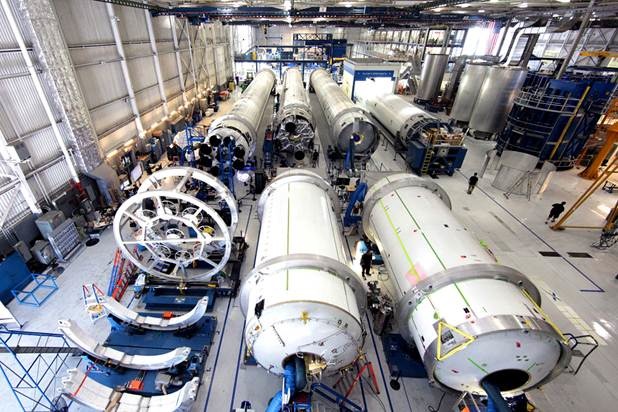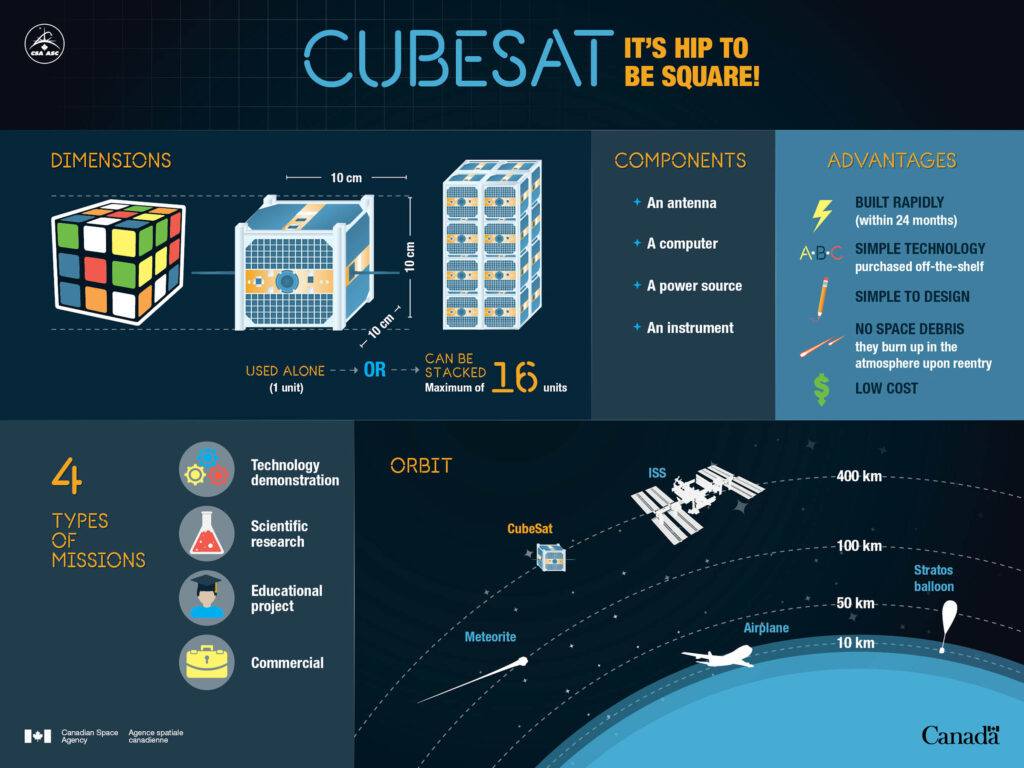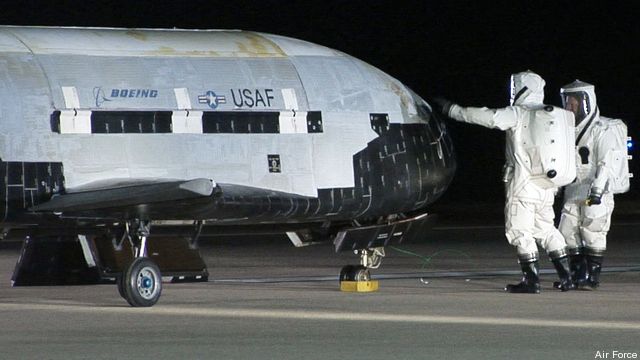US Must Rethink Space Policy In Face Of Enormous Change
Posted on

SpaceX Falcon 9 rockets in production.
WASHINGTON: In the vast swirling enterprise of global security space, the United States must come to terms with the tectonic shifts occurring as commercial companies come to dominate launch, the building of satellites and the sensors and software on which they depend, and figure out how to lead the way.
That’s the conclusion of what may become a touchstone study by two of the brightest lights in national security space, Jim Vedda and Pete Hays. Vedda is a space strategist with the Aerospace Corporation and Hays works with the Space Policy Institute at George Washington University. They surveyed more than 30 experts on major areas of concern within the U.S. space enterprise to help leaven the study’s guidance.
“The United States and other global space actors are participants in a fundamental reordering of many tenets and assumptions that have been long-standing attributes of US national space policy and international agreements,” they argue in the study, published by the Mitchell Institute for Aerospace Studies. “The United States should lead by example. Part of this leadership is creating a path that does more than react to the technical evolution, programmatic developments, or perceived intentions of other countries. The path should serve US national interests by expanding capabilities that enhance security, the economy, and science.”
All you have to do to get a glimpse of how much the global space enterprise has changed is consider how Elon Musk’s SpaceX has morphed from a bold but precarious investment a decade ago to what may become the dominant power in national security launch, possibly supplanting the Boeing and Lockheed Martin entity known as the United Launch Alliance in years to come.
Vedda and Hays put it this way: “For example, business investment is now the driver of most space applications, and ‘smallsats’ (small satellites or miniaturized satellites) are being deployed on orbit on behalf of universities, high schools, and even middle schools. This has been called the ‘democratization’ of space.”
 Parallel to that is a vigorous global effort by governments and companies to build “next-generation capabilities, in some cases with unfriendly or unpredictable intentions,” the authors say. These new entrants to space “recognize the advantages and vulnerabilities of space-enabled business and warfare. As a result, the perception of space as a superpower-dominated (or even government-dominated) domain has faded, as has the notion that space is a sanctuary shielded from the warfighting domain.”
Parallel to that is a vigorous global effort by governments and companies to build “next-generation capabilities, in some cases with unfriendly or unpredictable intentions,” the authors say. These new entrants to space “recognize the advantages and vulnerabilities of space-enabled business and warfare. As a result, the perception of space as a superpower-dominated (or even government-dominated) domain has faded, as has the notion that space is a sanctuary shielded from the warfighting domain.”
Breaking D readers will recognize the results of some of this change. Space is now “congested and contested,” the Air Force has said for several years. It’s a hackneyed phrase, clearly aimed to help explain these complex issues to lawmakers. But it’s also true.
Much of the report deals with space traffic management (how to ensure launches and satellites can occur without rockets and satellites banging into each other or causing hazards to navigation) the impact of the rapidly growing phenomena of small or cube satellites, and the regulatory structure that governs US civil, commercial and national security space.

The X-37B, capable of maneuvering in space and staying in orbit for protracted periods.
The really interesting bit for our dear readers concerns counterspace, the always controversial combination of offensive and defensive actions designed to deprive the enemy of its space assets. The report may influence the Trump Administration’s creation of a classified Space Strategic Framework. At the first meeting of the revived National Space Council, its chairman, Vice President Mike Pence, said he wanted action items in 45 days. If they got going on Oct. 5, they might have something, but most of the space experts with whom I spoke said 45 days was much too short for such a complex and sensitive effort.
How grim is the competition we face in orbit?
“Any vestiges of a space sanctuary mindset were removed following a May 2013 Chinese test of a ground-based, direct-ascent system all the way to GEO, a capability the United States and Soviet Union did not develop even in the depths of the Cold War,” Vedda and Hays write. “The Chinese are also developing a wide range of multi-dimensional and comprehensive ground- and space-based counterspace capabilities in addition to these most prominent ground-based, direct ascent ASAT systems.”
This requires, the authors write, that “all aspects of US national space policy must adjust and adapt to this new reality.”
They include a variety of interesting quotes from the experts they surveyed. “More needs to be done to lower US classification barriers to ‘blaming and shaming.’ China, in particular, may be sensitive to publicity that makes it appear to be an aggressor in space, despite its rhetoric. This could be used to the advantage of the most transparent nations. Over time, it is likely that commercial or other non-governmental entities will bring greater transparency to the counterspace realm, whether governments like it or not.”
ADDED The biggest silence in the report was its avoidance of command and organizational issues, such as the creation of a Space Corps and the continuing reorganization of Strategic Command. I asked Vedda and Hays about this and they conceded they hadn’t tackled it. Does national security space need reform, I asked? Hays offered a really intriguing answer. In fact, it’s been reforming for much of the last 15 years and has been changing every two or three years. Space warfare is so complex, he said, organizations may never really keep pace, Hays said.
Subscribe to our newsletter
Promotions, new products and sales. Directly to your inbox.
